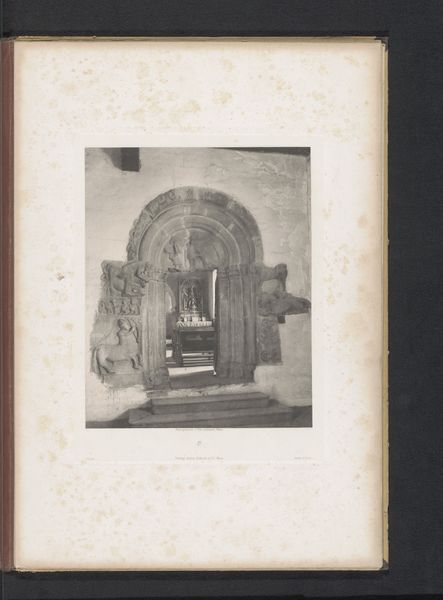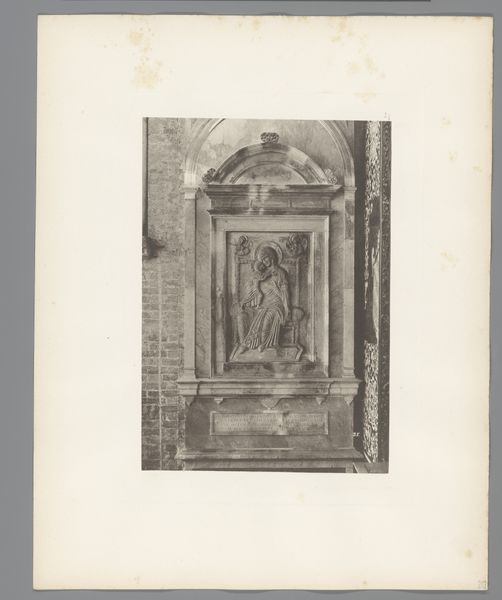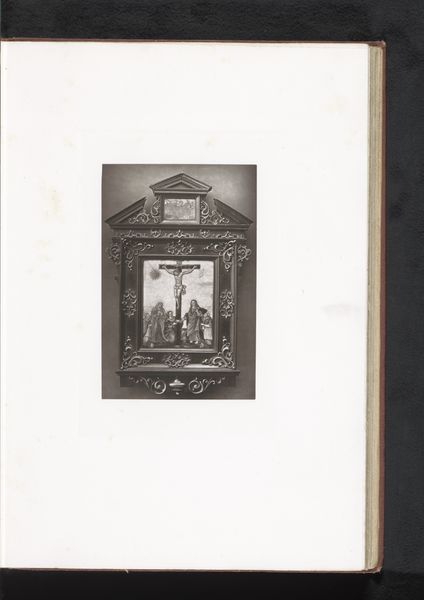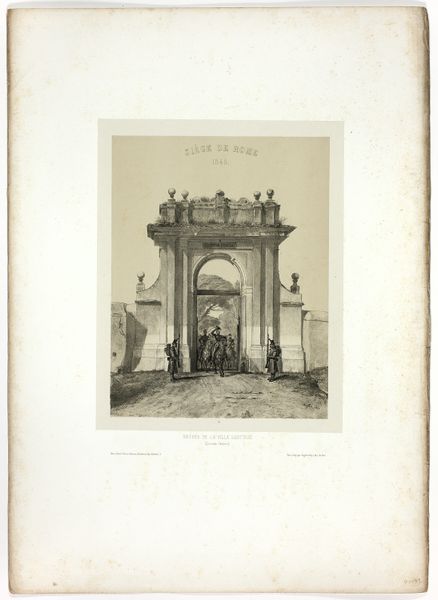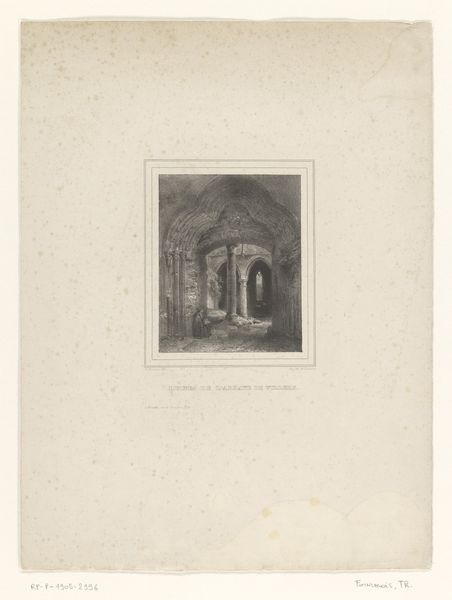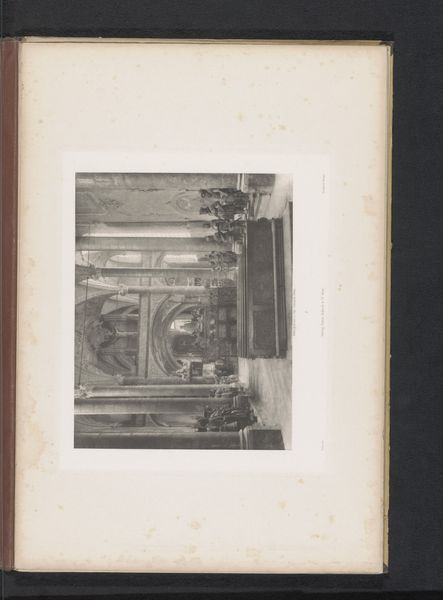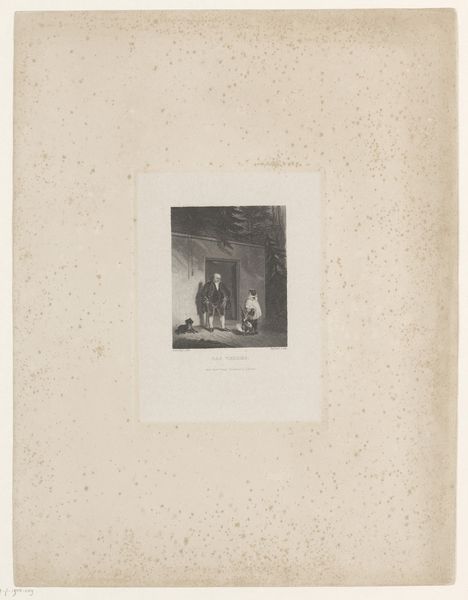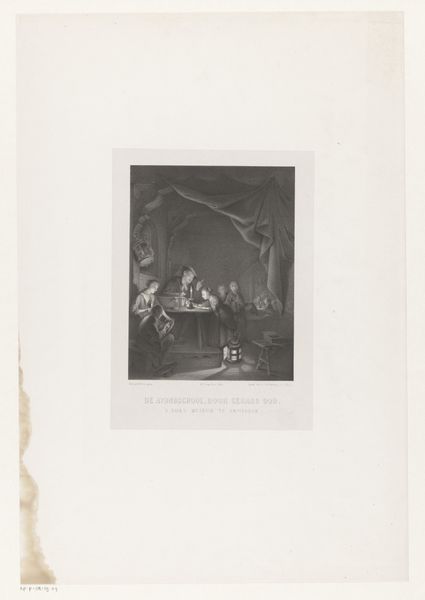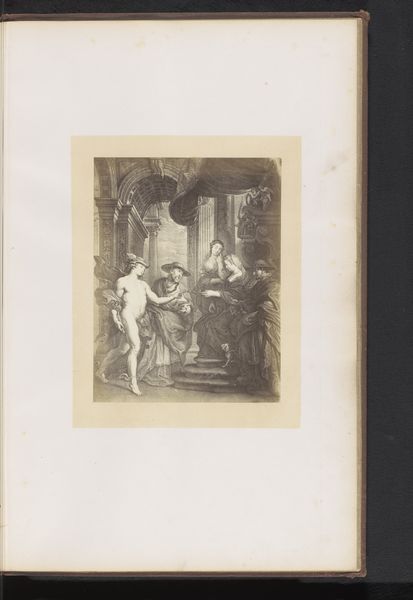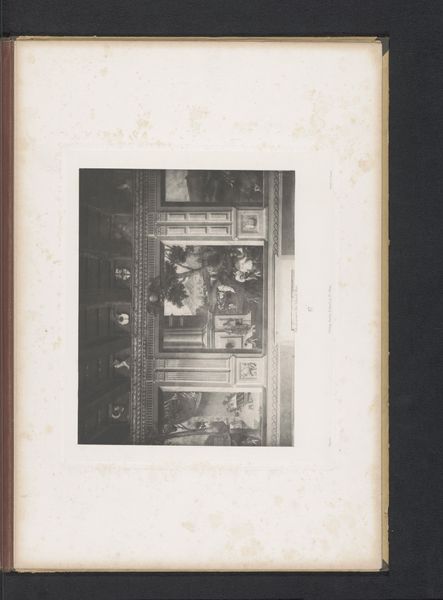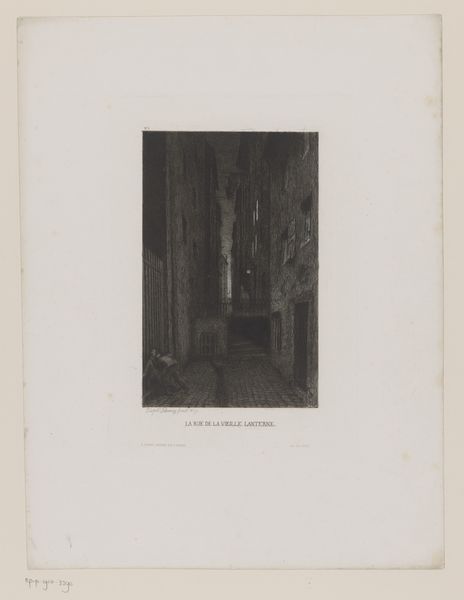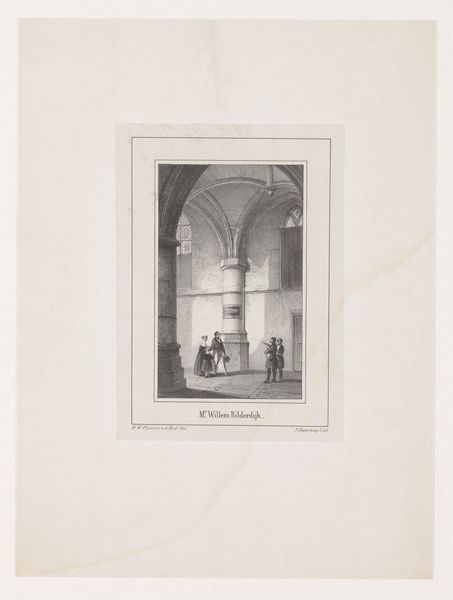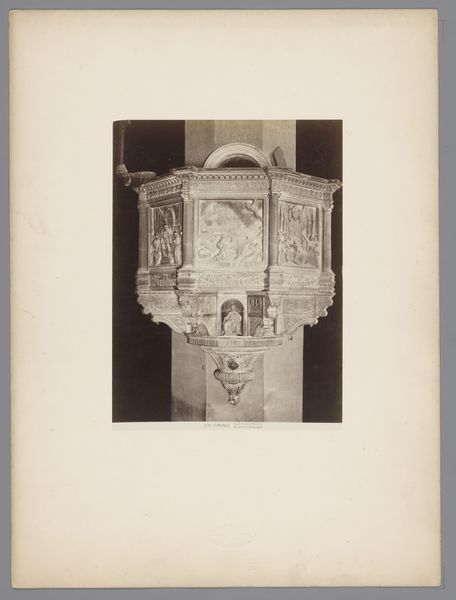
drawing, print, paper, ink
#
drawing
# print
#
landscape
#
perspective
#
paper
#
ink
#
genre-painting
#
academic-art
#
realism
Dimensions: height 261 mm, width 215 mm
Copyright: Rijks Museum: Open Domain
Paulus Lauters created this print, Kerkdienst, using a technique called lithography. Lithography, unlike etching or engraving, is based on the simple principle that oil and water don't mix. The image is drawn with a greasy crayon onto a flat stone or metal plate, which is then treated so that ink adheres only to the drawn areas. This printmaking technique allowed for relatively quick and inexpensive reproduction, which democratized image-making in the 19th century. Lauters' choice of lithography speaks to a broader shift in artistic production, as traditional skills meet new industrial processes. The final print, with its delicate gradations of tone and intricate detail, is a testament to the artist's mastery of a technique that bridged the gap between fine art and mass production. Appreciating the process of lithography helps us to understand its historical and cultural significance. It challenges conventional notions of artistic value centered on the uniqueness of a work.
Comments
No comments
Be the first to comment and join the conversation on the ultimate creative platform.
